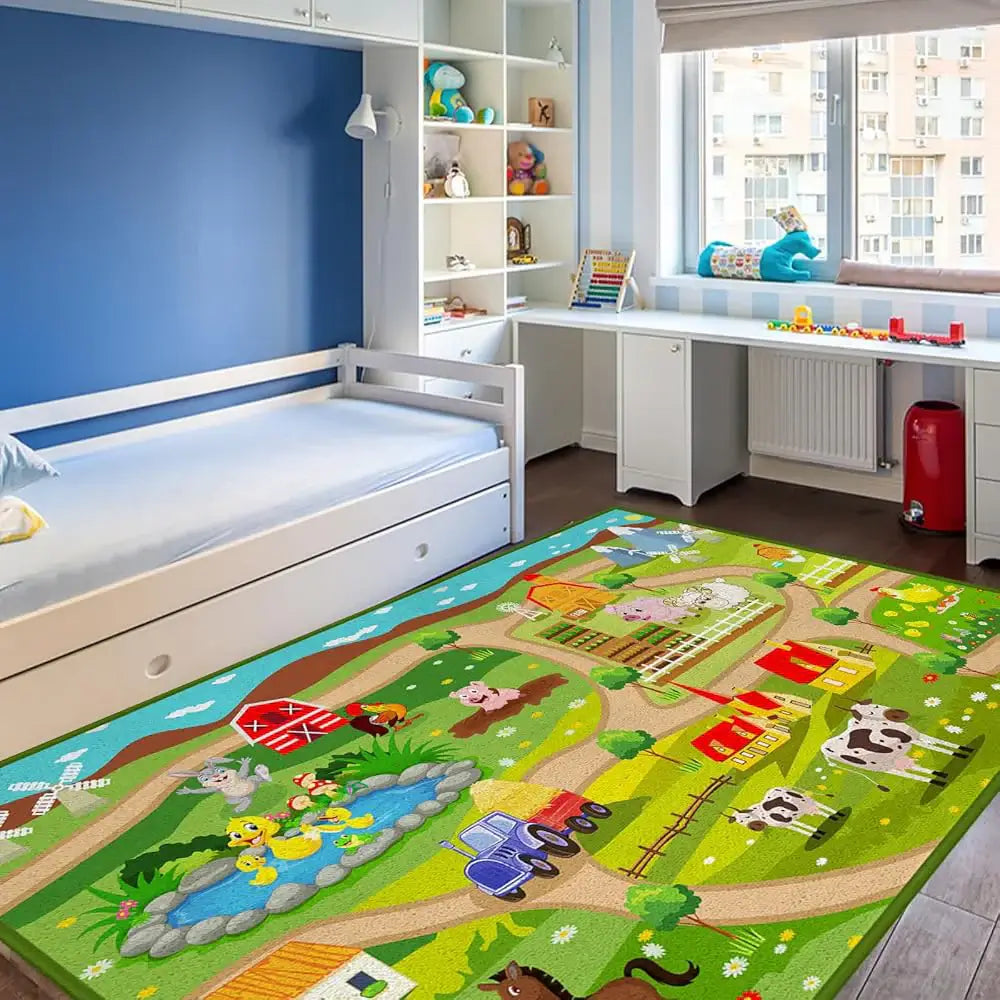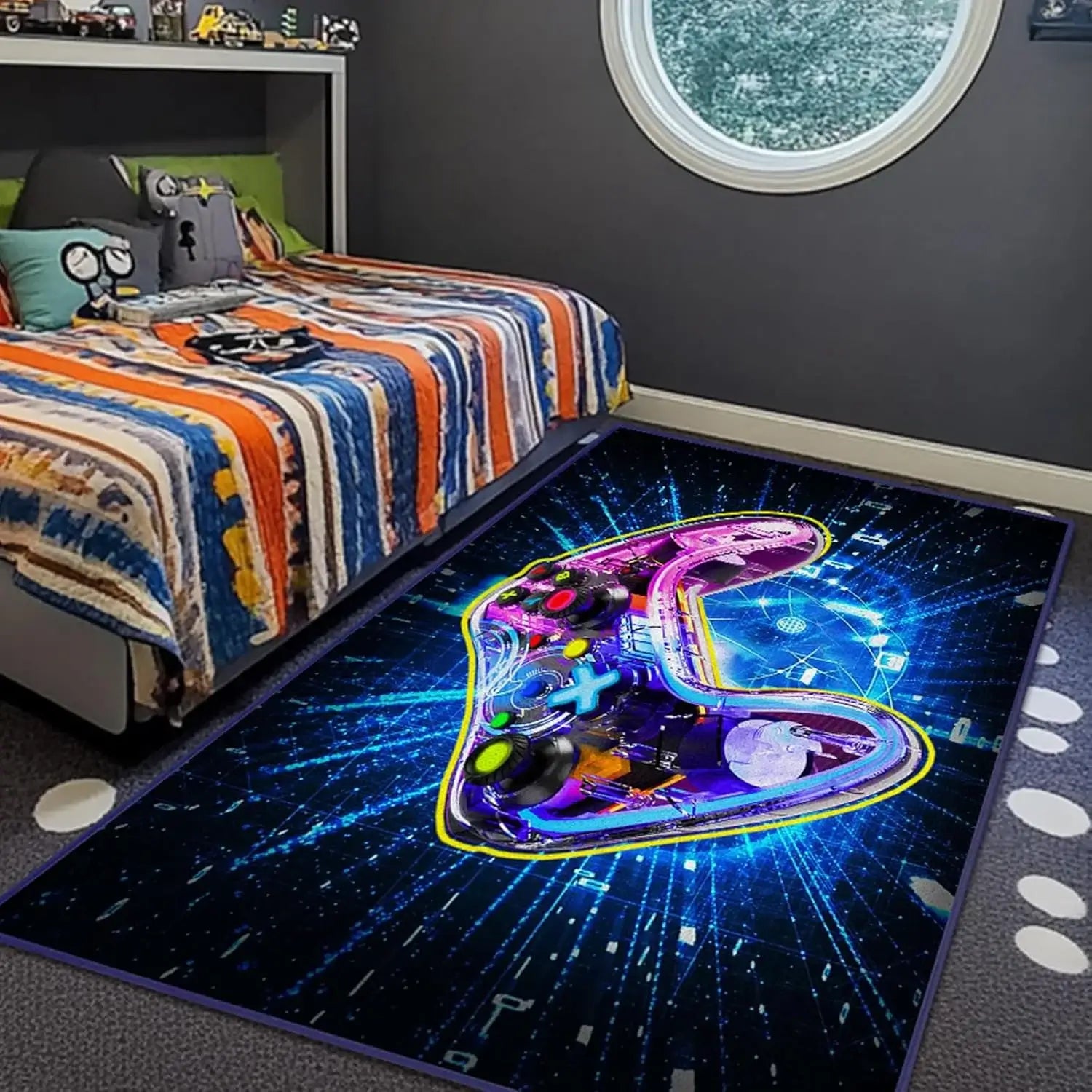Understanding Trauma-Informed Design Principles
Trauma-sensitive classroom design goes beyond aesthetics—it's about creating environments that acknowledge the impact of trauma on learning and provide students with spaces where they feel physically and emotionally safe.
The Substance Abuse and Mental Health Services Administration emphasizes that trauma-informed environments should prioritize safety, trustworthiness, peer support, and cultural responsiveness.
When designing these spaces, educators must consider how every element—from lighting to furniture placement—affects students who may be hypervigilant, easily overwhelmed, or struggling with emotional regulation.
This is where thoughtfully selected classroom rugs become powerful tools for creating therapeutic learning environments.
The Psychology Behind Soft Surfaces and Comfort
Soft textures and comfortable seating options play a significant role in helping trauma-affected students feel grounded and secure.
According totrauma-informed care research, physical comfort directly impacts a student's ability to focus, learn, and form positive relationships with peers and teachers.
Kids rugs provide essential sensory input that can help regulate the nervous system.
The soft texture under bare feet or hands offers proprioceptive feedback that many children find calming and centering.
For students who have experienced trauma, this type of sensory input can be particularly grounding during moments of emotional dysregulation.
Design Features That Matter Most
Color Psychology in Educational Settings
The colors and patterns of classroom rugs significantly impact the emotional atmosphere of learning spaces.
Warm, muted tones, like those found in our pastel classroom rugs, tend to create calming environments that don't overstimulate sensitive students.
Research from the University of British Columbia suggests that blue tones can enhance creativity and calm, While we often recommend softer tones, thoughtfully designed colorful classroom rugs can also be used to create positive, uplifting spaces without being overwhelming.
Size and Placement Considerations
Strategic rug placement creates defined spaces within the classroom that serve different purposes.
A large classroom rug might anchor the whole-group meeting area, providing a communal space for grounding, while a smaller, plush reading rug can create a cozy calm-down corner.
These defined spaces help students understand expectations and provide options for self-regulation throughout the day.
Consider incorporating flexible seating options alongside your rug choices to maximize the therapeutic potential of your classroom design.
Texture and Sensory Elements
The tactile experience of kids rugs can provide crucial sensory regulation for students with trauma histories.
Rugs with varied textures—from plush pile to interesting weaves—offer different sensory experiences that students can seek out based on their regulatory needs.
Some children may find deep pressure from lying on a thick rug helpful, while others prefer the light touch of a textured surface under their fingertips.
Creating Calm-Down Spaces with Strategic Rug Placement
One of the most effective applications of trauma-sensitive rug design is in creating dedicated calm-down areas.
These spaces should feel separate from the main classroom activity while remaining accessible and non-punitive.
A soft, comfortable rug defines this space and signals to students that it's a place for self-care and emotional regulation.
These calm-down areas work best when they include additional sensory tools like weighted blankets, fidget items, or soft lighting.
The rug serves as the foundation that makes the space feel intentionally designed for comfort rather than exile.
For more ideas on creating effective calm-down spaces, explore our guide to sensory-friendly classroom design.
Supporting Different Learning Styles Through Floor Seating
Many students, particularly those with trauma histories, learn better when they have movement options and aren't confined to traditional desk seating.
Floor rugs enable flexible learning arrangements where students can lie on their stomachs to write, sit cross-legged for discussions, or even stand and move around the perimeter while still participating in lessons.
This flexibility is particularly important for students whose trauma responses may include hypervigilance or difficulty sitting still.
According to research on trauma and learning, allowing students choice and control over their physical positioning can significantly improve their ability to engage with academic content.
Building Community Through Shared Spaces
Circle time and community meetings are essential components of trauma-informed classrooms, and a well-chosen rug can facilitate these important social-emotional learning opportunities.
When students gather on a classroom seating rug, where everyone has an equal spot, it creates a sense of equality and community that helps build trust.
The physical boundary of the rug helps define the meeting space and creates a container for sharing and discussion.
Students know that when they're on the rug, different rules apply—they're in a space designed for listening, sharing, and supporting one another.
Practical Implementation Tips for Educators
Maintenance and Hygiene Considerations
Trauma-sensitive environments must also be clean and well-maintained environments.
Choose rugs that can be easily cleaned and sanitized, as some students may have heightened sensitivity to odors or concerns about cleanliness based on their experiences.
Regular maintenance of classroom rugs shows students that their learning environment is cared for and valued.
Budget-Friendly Options That Don't Compromise Quality
Creating trauma-sensitive spaces doesn't require expensive materials.
Focus on key features like appropriate size, calming colors, and durable construction rather than high-end designer options.
Many effective classroom rugs are available at reasonable price points while still providing the sensory and emotional benefits students need.
Check out our collection of affordable classroom rugs that prioritize both functionality and trauma-sensitive design principles.
Involving Students in the Design Process
When possible, involve students in selecting or arranging classroom rugs and spaces.
This gives them agency in their learning environment and helps ensure that the spaces meet their actual needs rather than adult assumptions about what might be helpful.
Student input can be gathered through surveys, classroom meetings, or simple feedback sessions about what makes them feel safe and comfortable.
Measuring Success: Signs Your Rug Choices Are Working
Effective trauma-sensitive design should result in observable changes in student behavior and engagement.
Look for signs like increased participation in floor-based activities, students naturally gravitating toward calm-down spaces when needed, or improved emotional regulation during transitions and challenging moments.
Documentation of these changes can help justify continued investment in trauma-informed design elements and demonstrate the value of thoughtful environmental choices to administrators and parents.
The Broader Impact of Thoughtful Design
Creating trauma-sensitive classrooms through strategic use of kids rugs and other design elements benefits all students, not just those with identified trauma histories.
These environments support emotional regulation, community building, and flexible learning approaches that enhance the educational experience for every child.
As educators continue to recognize the profound connection between environment and learning, investing in trauma-sensitive design becomes an investment in student success, teacher effectiveness, and overall school climate.
The simple addition of well-chosen kids rugs can be a powerful first step toward creating classrooms where all students feel safe, supported, and ready to learn.




Leave a comment
This site is protected by hCaptcha and the hCaptcha Privacy Policy and Terms of Service apply.